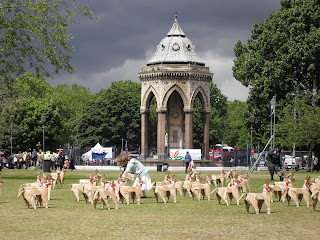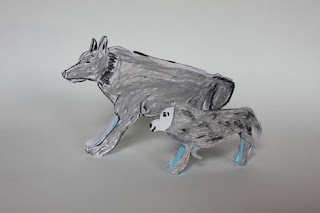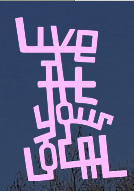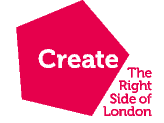
One of the underpinning principles of the DOG Sculpture Installation was the desire of the artist to provide something of value to her community. As a consequence she has set up and run sculpture workshops for primary school children in the boroughs of Tower Hamlets and Hackney. The idea behind these was not to bring the children into the DOG Sculpture as "workers" or "contributors" but to bring them in as artistic partners.

For this to work Takayama provided the structure of a sculpture making workshop but did not define the form. In this manner the children, with their teacher, could decide on their own artistic ambitions within the remit of their existing educational programme. The idea was for the children to create their own sculpture which they could see in the context of Takayama's public art work and perhaps consider their own artistic future in the process.

The educational benefits of spatial awareness, three dimensional sculpture construction and then the public acclaim of having your work on public display (both in local venues and on this site) should be self evident.

What continually surprises is the quality of work 8 year old children are capable of when they work with an artist. Some of the drawing skills, some of the conceptualisation and all of the unbounded enthusiasm are simply to be marvelled at.

If we just consider some of the form these children have presented with their drawings, the drawings which are the basis of the model design, then we really have to question why more art workshops are not provided for children in inner city areas.

No words necessary here, these sculptures speak for themselves. The untutored eye might see the use of a template here but using a template in designing a sculpture is a skill in itself. The purpose of the workshops was to give the children the opportunity to realise spatial awareness, management of projects, design, construction and delivery within the activity of being an artist. All of these skills are valuable educational experiences and reinforce the core curriculum activities but where, especially for children from inner city communities, this approach really has value is in the public presentation of the end results and the consequent approval each child receives for themselves and their work.
Each school involved in the workshops took their own approach, tailored the sculpture construction to relate to existing classroom deliveries. This is the advantage to the schools and the teachers of the approach Akane Takayama has taken; she hasn't sought to impose an "art agenda" on the schools but provide an "art opportunity" which the schools can fit within their own educational management schedule and adapt the workshop content to support that schedule.
The skills and imagination are plain for all to see. As you look through these models consider the detail and imagination these children have employed.

























































